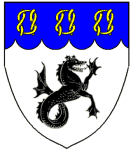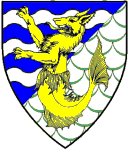Sea Wolf
Joined: 01 Nov 2003
Posts: 8650
City/Region: Redding
State or Province: CA
C-Dory Year: 1987
C-Dory Model: 22 Cruiser
Vessel Name: Sea Wolf
Photos: Sea Wolf
|
 Posted: Sat Oct 02, 2004 8:44 pm Post subject: Converting Drum to Disc Brakes Posted: Sat Oct 02, 2004 8:44 pm Post subject: Converting Drum to Disc Brakes |
 |
|
Trailer Fans:
I've finally finished the disc brakes installation, so will offer some advice:
1. The Tie-Down Engineering brand of equipment seems perfectly adequate thus far. I haven't made any horrendous downhill runs yet, but by it's appearance and fit, it's good quality.
2. I did it with the boat on the trailer because our other boat is in my slip, but it would be a lot easier w/o the boat.
3. Replace everything. The hardest part would be threading the stainless lines through the trailer frame, which I didn't do because I thought it would be too difficult with the boat in the way, but if you get the boat off, do the whole outfit, every last piece.
4. Champion Trailers is the best and least expensive source of the parts. Their complete kit for about $400 has the complete hubs, bearings, seals, cups, brakes, stainless lines, flex hoses, actuator, and hydraulic lock-out...everything you need. Most other sources have only some of the parts, and at much higher prices. Plus this way you'll know it all fits together and you have all of the pieces.
www.championtrailers.com
5. If you have a small tow vehicle and a tandem trailer, put brakes on both axles. I'm doing just fine with a Durango and the CD-22 on a tandem with front brakes only, but for longer service intervals between brakes pads ($16 per set per wheel), and more peace of mind with a smaller tow vehicle, I'd add rear brakes the next time. Another issue is that the tandem leaf spring trailer tends to shift weight onto the rear axle and lift the front axle up if equipped with front brakes only, as the reverse/stopping torque acts through the equalizer (the drop down hinge piece between the leaf sets) to push the rear axle down while raising the front axle. Some states REQUIRE brakes on both axles.
6. Take your time, this isn't a job you want to do half-a**ed while drinking a couple of six-packs!!!
7. Both Tie-Down Engineering (manufacturer) and Champion Trailers (parts supplier) have great down-loadable Installation Instructions that detail everything you need to know and do. Use them both; they compliment each other:
www.champiohtrailer.com
www.tiedown.com
8. While you could use your old actuator (coupler/brake cylinder), I'd advise against it. If you use one equipped for drum brakes, the check valve has to be defeated by puncturing it with a punch or ice pick. I did this, but the actuator still put continuous hydraulic pressure on the new brakes, so I bought a new one. Here's what happens frequently:
If you uncouple your trailer and then either leave the ball coupler in the pushed back position or allow it to be bumped into and pushed back, it can cause major problems in the master/brake actuator cylinder. Most of the older cylinders are cast iron (the new ones are aluminum). If the actuator is left in the pushed back position, water from the air can rust the portion of the cylinder in front of the piston on the opposite side of the fluid, making it impossible for the piston to fully retract, so the fluid pressure once applied does not get released. (Especially with a check value in place, but even without one.)
The result is that the next time the trailer is used, the brakes are applied and then stay on with moderate pressure, and when the operator fails to notice the moderate drag from the trailer, the brakes heat up from the resulting continuous friction, completely destroying the shoes or pads, and sometimes ruining the entire wheel brake mechanism and even resulting in fire under the trailer!
Another common cause of this same kind of disaster is setting the break-away cable too tightly and tripping the mechanism, or tripping it while making a very tight turn.
Thus the next point-
9. Always check your wheel/hub/disc/drum temperatures frequently when towing. Make sure nothing is dragging. Grease thrown out from grease cups, seals, or bearing protectors is a very probable indicator that the wheel is excessively hot---What's the cause?
10. My new smaller tow vehicle doesn't have as much space for tools and equipment, so to be sure I always have the trailer jack, lug wrench, chocks, grease gun, brake fluid, spare bulbs, etc., handy, I going to get a metal lockable box and mount it on the trailer so that I can't accidentally leave these important items home when trailering.
Photos of the wheel assembly and actuator are ion my photo album at the left.
Hope this helps answer some questions-Ask if you have more! Joe.
_________________
Sea Wolf, C-Brat #31
Lake Shasta, California
  
"Most of my money I spent on boats and women. The rest I squandered'. " -Annonymous |
|

 Search
Search Private Messages
Private Messages Profile
Profile Log in
Log in Register
Register Help
Help



